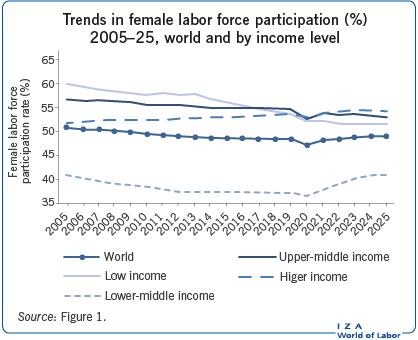Discurso de ascensor
The relationship between female labor force participation and economic development is far more complex than often portrayed in both the academic literature and policy debates. Due to various economic and social factors, such as the pattern of growth, education attainment, and social norms, trends in female labor force participation do not conform consistently with the notion of a U-shaped relationship with gross domestic produc (GDP). Despite the initial impact, Covid-19 did not have a lasting negative effect, on average, on women’s participation. At the same time, some countries have made significant progress in increasing participation rates for women, including those who have started from a lower level.

Hallazgos clave
Pros
Female labor force participation is an important driver (and outcome) of growth and development.
The participation of women in the labor force is impacted by various economic and social factors, ranging from positive pull factors, including educational attainment, and more challenging push factors, such as poverty.
Covid-19 did not leave a lasting impact on women in most labor markets and, encouragingly, a number of countries have made progress in increasing women’s participation in recent years.
Increased access to quality education (beyond secondary), social protection and care services support better employment outcomes for women.
Contras
Even when gender disparities in participation rates are low, women tend to earn less than men and are more likely to be engaged in unprotected jobs, such as domestic work.
Education raises the reservation wage and expectations of women, but it needs to be matched by the creation of the necessary jobs.
Underreporting is common, so data on women’s participation rates do not accurately reflect women’s work.